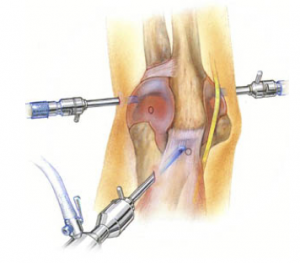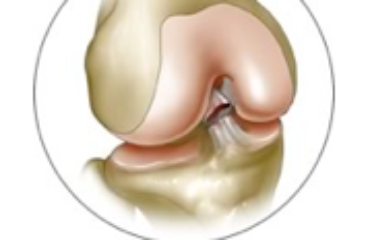Knee arthroscopy is a minimally invasive modern surgery used to diagnose and treat problems in the knee joint. Arthroscopy is useful in several knee problems. It has minimal risks, shorter recovery and has good outlook for most patients. Dr. Adam Farber, top knee surgeon in Phoenix, Arizona, answers most frequently asked questions about knee arthroscopy.
When is a knee arthroscopy surgery recommended?
Arthroscopic knee surgery is recommended when the patient is experiencing severe knee pain due to the following conditions:
• Torn ligaments – Anterior Cruciate Ligament (ACL), Posterior Cruciate Ligament (PCL)
• Torn meniscus – Cartilage between thigh bone (femur) and shin bone (tibia)
• Dislocated patella
• Torn cartilage floating free in the knee joint
• Knee bone fracture
• Swollen joint lining (synovium)
Board certified orthopedic surgeon Dr. Farber at Phoenix Shoulder and Knee Clinic has extensive experience in arthroscopic surgery and knee injury treatment.
 What happens during a knee arthroscopy?
What happens during a knee arthroscopy?
During an arthroscopic knee surgery, the orthopedic surgeon would make a small incision and insert a tiny camera (arthroscope) into your knee. This helps him to locate the problem in the knee joint. Small tools are then inserted through the incision to treat the problem. The incision is later closed with sutures. The best knee surgeon in Phoenix, Dr. Adam Farber, specializes in arthroscopic knee surgery to treat cartilage injuries, meniscal tears and ACL tears.
How will I recover after an arthroscopy?
Since knee arthroscopy is not very invasive, you may be sent home the same day. Your doctor will advise you on when you can move around, probably after a day. With care and physical therapy to restore full range of motion, the outlook with this knee surgery is good, to say the least.
Dr. Adam Farber, top knee surgeon at Phoenix Shoulder and Knee is well known for treating various knee conditions with arthroscopic knee surgery successfully to help patients return to their normal lives.


